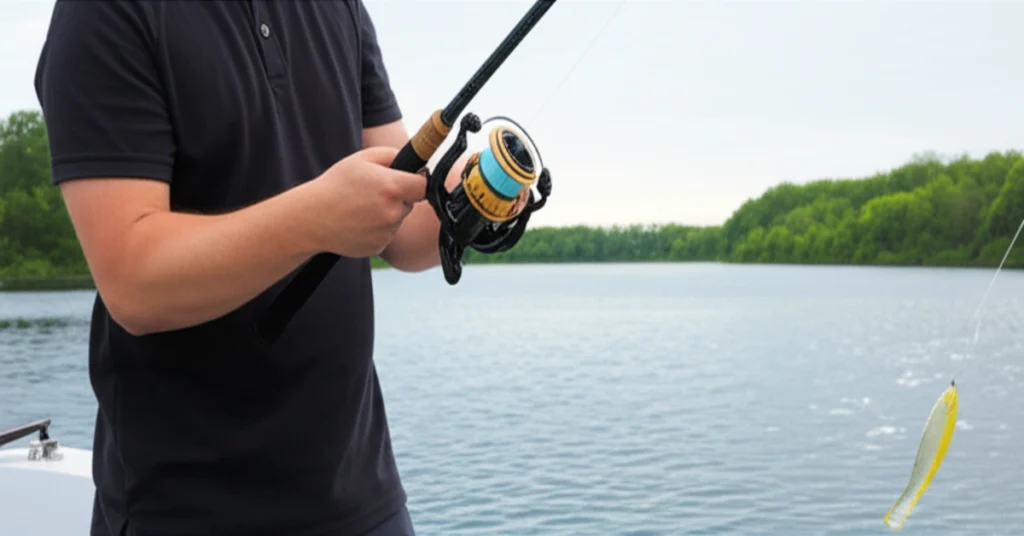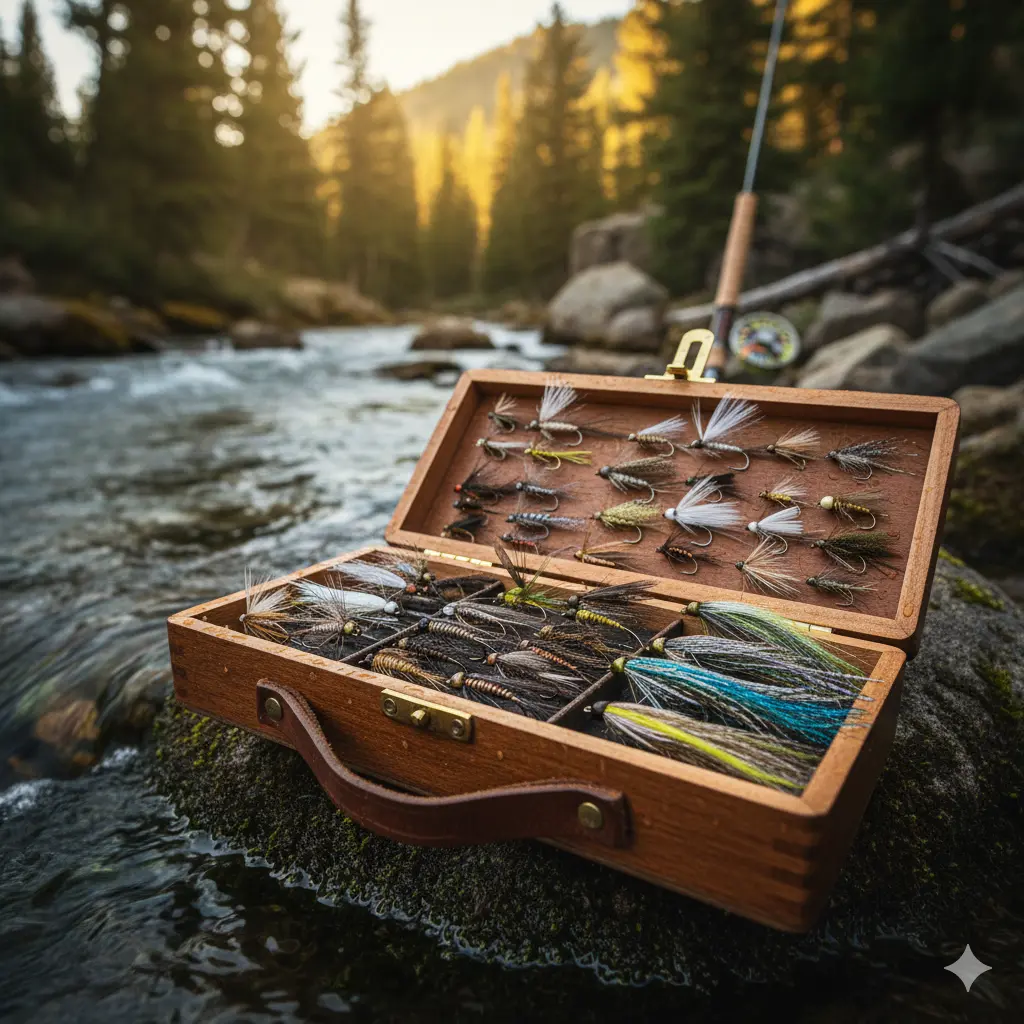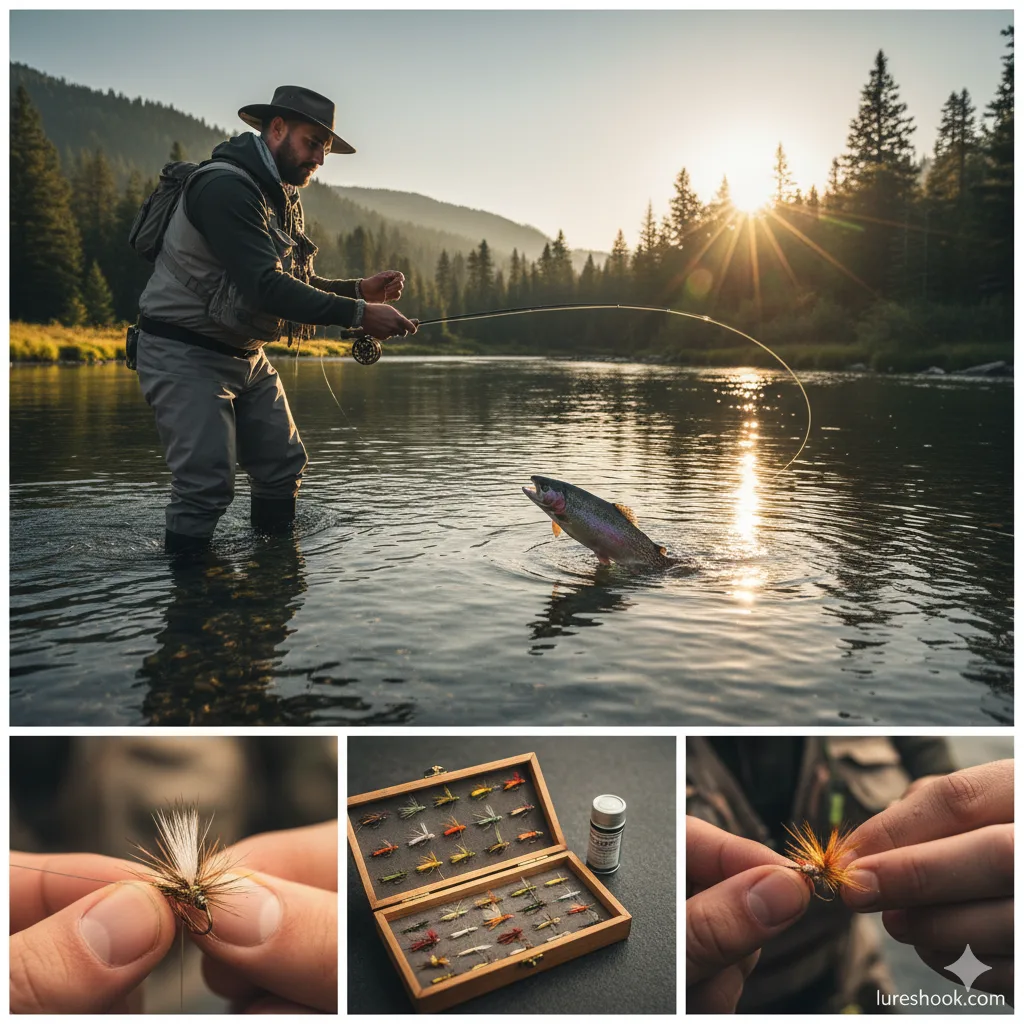Master Buzzbaits Fishing: Your Ultimate 2024 Guide
There’s no sound in fishing quite like the rhythmic *clack-clack-clack* of a buzzbait churning across the water’s surface, abruptly silenced by a violent, explosive strike. For anglers seeking heart-pounding action, mastering buzzbaits fishing is not just a skill—it’s an addiction. This guide solves the common frustrations many anglers face: missed fish, tangled lines, and confusion about when and where this unique lure truly shines. We will transform you from a hopeful caster into a confident topwater expert, covering everything from basic setup to advanced strategies.
This comprehensive buzzbait guide is designed to be your go-to resource. You’ll learn the secrets behind effective buzzbait presentations, how to make the right lure choices, and the subtle buzzbait tips that separate the pros from the novices. Get ready to experience the unparalleled thrill of buzzbaits fishing and put more, and bigger, bass in your boat.
Table of Contents
- What is buzzbaits fishing?
- Key Benefits and Importance
- Complete Step-by-Step Guide
- Expert Tips & Best Practices
- Common Mistakes to Avoid
- Advanced Strategies for 2024/2025
- Essential Tools & Resources
- Frequently Asked Questions
What is buzzbaits fishing?
Buzzbaits fishing is a topwater angling method that uses a unique wire-framed lure called a buzzbait to create noise and commotion on the surface, triggering aggressive strikes from predatory fish like largemouth bass. It is a high-speed, reaction-based technique that excels at covering vast amounts of water quickly to locate active fish.
Understanding the anatomy of the lure is central to effective buzzbait fishing. This knowledge informs all other aspects, including buzzbait selection, presentation, and modification. A solid grasp of the components helps you choose the right tool for the job, whether you’re engaging in buzzbait bass fishing in murky ponds or clear reservoirs. Mastering these fundamentals is the first step in this buzzbait guide to success.
Key Components
- The Blade: This is the engine of the lure. Usually made of aluminum or plastic, its rotation creates the signature sound, lift, and water displacement that attracts fish. Different shapes and sizes affect the sound and speed.
- The Wire Frame: A bent wire forms the lure’s backbone, connecting the blade, head, and hook. The angle of the arm can be tuned to change how the blade strikes the head, creating a “clacking” sound.
- The Head: A weighted lead or tungsten head provides casting distance and balance. It’s often painted in various buzzbait colors to match a skirt or local forage.
- The Skirt & Hook: A silicone or living rubber skirt conceals a sharp, sturdy hook. The skirt adds bulk and pulsating action, and a trailer hook can be added to improve hook-up ratios on short-striking fish.
Why buzzbaits fishing Matters: Key Benefits
The allure of buzzbaits fishing goes beyond the exciting visual strikes. It is a strategically powerful technique that offers distinct advantages over other methods, making it an indispensable tool in any serious angler’s arsenal. Its ability to quickly dissect a body of water makes it one of the most efficient search baits available.
Unmatched Water Coverage
A buzzbait is designed to be fished relatively quickly on a steady retrieve. This allows an angler to cover long stretches of bank, expansive weed flats, and other large areas far more efficiently than with slower techniques like a Texas rig or jig. For example, in a tournament scenario, an angler can use a buzzbait during the first hour of daylight to quickly identify areas holding aggressive bass, then return later to fish those zones more thoroughly with slower presentations.
Triggers Explosive Reaction Strikes
The unique combination of sound, splash, and vibration preys on a bass’s predatory instincts. A buzzbait doesn’t imitate a specific creature perfectly; instead, it creates a disruptive presence that bass feel compelled to eliminate. This often results in strikes born from pure aggression rather than hunger, enticing even neutral or non-feeding fish to attack. This is especially true in low-light conditions like dawn, dusk, or on overcast days when bass are more willing to hunt on the surface.
“A buzzbait is pure chaos on the surface. It doesn’t ask a bass if it’s hungry; it tells it to attack. That’s why the strikes are so violent and unforgettable.”
Complete Guide to buzzbaits fishing – Step-by-Step
Successfully implementing buzzbaits fishing requires a systematic approach, from selecting the right equipment to executing the perfect cast and retrieve. Following these steps will build a solid foundation for topwater success and provide a framework for adapting to various conditions. This is the core of our buzzbait guide.
Step 1: Proper Gear Selection
Using the wrong gear is a primary reason anglers struggle with buzzbait fishing. The right setup enhances casting accuracy, retrieve control, and hook-setting power.
- Rod: A 7’0″ to 7’4″ medium-heavy power rod with a fast action is ideal. The length aids in long casts, while the power provides the backbone to drive the hook home and pull fish from cover.
- Reel: A high-speed baitcasting reel with a gear ratio of 7.1:1 or higher is crucial. This allows you to quickly pick up slack line and get the buzzbait on plane as soon as it hits the water.
- Line: 30-50 lb braided line is the top choice. It has no stretch for solid hooksets, it floats to help keep the lure on the surface, and its strength easily cuts through vegetation. Some anglers prefer a 15-20 lb monofilament leader for a bit of shock absorption, but it’s not always necessary.
Step 2: Effective Lure Selection
The market is filled with options, but a strategic approach to buzzbait selection will significantly improve your results. Consider weight, color, and blade configuration.
Your choice of buzzbait sizes and buzzbait colors should be dictated by conditions. Heavier 1/2 oz or 3/4 oz baits are best for windier days or when you need to make long casts. Lighter 1/4 oz or 3/8 oz models excel in calm conditions or when fish are wary. For colors, start simple: black for low-light/night, white or shad patterns for clear water and sunny days, and chartreuse for stained water.
Step 3: Mastering Your Presentation
This is where skill truly comes into play. The most effective buzzbait presentations involve more than just casting and reeling.
Start your retrieve the instant the lure touches down. This is critical for keeping the bait on the surface and surprising nearby fish. Experiment with retrieve speed; a general rule is to reel just fast enough to keep the blade gurgling on top. Finally, always retrieve the buzzbait all the way back to the boat or bank. Fish often follow the lure for a long distance before committing to a strike right at your feet.
Expert Tips & Best Practices for buzzbaits fishing
Adhering to best practices and incorporating expert buzzbait tips will dramatically shorten your learning curve and increase your catch rate. Small adjustments in your approach can make a world of difference in your buzzbaits fishing success.
For Beginners:
- Vary Your Retrieve Speed: Don’t just reel at one monotonous pace. Speed it up, slow it down, and even pause it briefly to let it sink for a second around cover. This erratic action can trigger strikes from following fish.
- Target High-Percentage Areas: Cast your buzzbait parallel to cover like laydown trees, dock edges, and weed lines. This keeps your lure in the strike zone for the entire duration of the retrieve, maximizing your chances.
- Add a Trailer Hook: If you are getting a lot of short strikes where the fish just boils on the lure without getting hooked, add a trailer hook. This simple addition can increase your hook-up ratio by over 50%.
For Advanced Users:
- Tune Your Buzzbait for a Squeak: A high-pitched squeak can drive bass crazy. Achieve this by slightly bending the wire arm so the blade’s rivet rubs against it, or by using pliers to crimp the rivet. A squeaky buzzbait often out-fishes a silent one.
- Experiment with Night Fishing: Buzzbait bass fishing after dark can be incredibly productive, especially during hot summer months. Use a black buzzbait with a large, loud blade and prepare for some of the most violent strikes you’ll ever experience.
5 Common buzzbaits fishing Mistakes to Avoid
Success in buzzbaits fishing is often about what you don’t do. Avoiding these common pitfalls is crucial for consistent results and preventing a frustrating day on the water.
Mistake #1: Setting the Hook Too Early
The Problem: The explosive nature of a topwater strike causes a reflex action to immediately jerk the rod back. This often pulls the lure out of the fish’s mouth before it has fully engulfed it.
The Solution: Wait until you feel the weight of the fish on your line before setting the hook. A common mantra is to say “God save the Queen” or simply wait one full second after the splash. Reel down to remove slack, then sweep the rod to the side for a firm hookset.
Mistake #2: Retrieving at the Wrong Speed
The Problem: Many anglers either fish the buzzbait too fast, not giving the fish a chance to track it, or too slow, causing it to sink below the surface.
The Solution: The ideal speed is the slowest you can retrieve while still keeping the blade gurgling on the surface. This maximizes the lure’s time in the strike zone and presents an easier target for the bass.
Mistake #3: Ignoring Lure Modifications
The Problem: Using a buzzbait straight out of the package often means you’re missing out on key fish-triggering enhancements.
The Solution: Always add a trailer hook. Consider trimming the skirt to create a more compact profile. Most importantly, tune the wire arm to create that coveted squeak. These small adjustments can be the difference-maker.
Mistake #4: Using the Wrong Line
The Problem: Using fluorocarbon or a light monofilament line can lead to lost fish and poor lure performance. Fluorocarbon sinks, pulling the buzzbait under, while light mono has too much stretch for a solid hookset at a distance.
The Solution: Stick with 30-50 lb braided line. Its floating properties and lack of stretch are perfectly suited for the demands of buzzbaits fishing.
Mistake #5: Giving Up After a Miss
The Problem: A fish blows up on the lure and misses, and the angler immediately reels in to make another cast elsewhere.
The Solution: When a fish misses, immediately cast a follow-up bait like a weightless Senko or a wacky rig back to the exact same spot. The bass is often still there and agitated, and will readily eat the slower-falling plastic.
Advanced buzzbaits fishing Strategies for 2024/2025
As you become more proficient, you can incorporate cutting-edge approaches to catch fish that others miss. These modern buzzbait fishing techniques are what set seasoned anglers apart, especially on highly pressured bodies of water.
Bumping Cover Intentionally
Most anglers try to avoid hitting objects, but advanced buzzbaits fishing involves intentionally running the lure into cover. By bumping the buzzbait off of dock pilings, stumps, or laydown branches, you create an erratic, direction-changing action that mimics a panicked baitfish. This sudden change in sound and cadence is a massive strike trigger. This requires precise casting but pays huge dividends, as the strike often occurs the very second the lure deflects off the object.
The Stop-and-Go Presentation
While a steady retrieve is standard, the stop-and-go is a deadly tactic for finicky bass. In areas with scattered cover like sparse grass clumps or isolated stumps, retrieve the bait normally until it reaches the cover, then briefly pause your retrieve. The buzzbait will helicopter down for a moment before you resume reeling. This mimics a stunned or injured baitfish and can coax strikes from bass that are unwilling to chase a fast-moving target. It’s an excellent way to get more bites on tough days.
Essential Tools & Resources for buzzbaits fishing
Having the right tools and knowing where to find reliable information can accelerate your mastery of buzzbaits fishing. Here are some essentials to keep on hand.
Recommended Tools:
- Pliers: A good pair of needle-nose pliers is non-negotiable. You’ll need them for tuning the wire arm, adding or removing trailer hooks, and safely unhooking fish.
- Trailer Hooks: Always have a pack of trailer hooks that match the size of your primary buzzbait hook. They are inexpensive insurance against short strikes and will significantly increase your landing percentage.
- Super Glue: A small tube of super glue is useful for securing soft plastic trailers to the hook shank, preventing them from sliding down on the cast or after a strike. This keeps your presentation looking perfect.
Additional Resources:
- Online Fishing Forums: Websites like BassResource provide a community where you can ask questions, share experiences, and read detailed buzzbait reviews from other dedicated anglers.
- YouTube Channels: Visual learning is powerful. Channels dedicated to bass fishing often feature in-depth videos on buzzbait fishing techniques, showing you exactly how to perform retrieves and modifications.
Frequently Asked Questions About buzzbaits fishing
Q1: What are the most crucial buzzbait tips for a beginner?
Answer: For beginners, the three most important buzzbait tips are: 1) Use braided line to ensure solid hooksets and keep the lure on the surface. 2) Wait a full second after you see the strike before setting the hook to make sure the fish has the bait. 3) Always add a trailer hook to convert short strikes into landed fish. Mastering these three fundamentals of buzzbaits fishing will solve 90% of beginner frustrations.
Q2: When is the best time of day or year for buzzbait bass fishing?
Answer: The prime time for buzzbait bass fishing is during low-light periods. This includes dawn, dusk, and heavily overcast days. Seasonally, it excels from late spring through late fall when water temperatures are above 60 degrees Fahrenheit. However, it can be surprisingly effective on warm, sunny days when fished in the shade provided by docks, overhanging trees, or thick vegetation.
Q3: How do I decide between different buzzbait colors and buzzbait sizes?
Answer: Buzzbait selection should be simple. For buzzbait sizes, use a 1/4 oz or 3/8 oz for calm conditions and a 1/2 oz for wind or when you need more casting distance. For buzzbait colors, follow the ‘match the sky’ rule of thumb. On dark, overcast days or at night, use a black buzzbait for maximum silhouette. On bright, sunny days, use white or a shad pattern to imitate baitfish. In murky or stained water, chartreuse can help fish locate the lure.
Q4: Why would I choose a buzzbait over another topwater lure like a popper or a frog?
Answer: A buzzbait is a search lure. You choose it when you need to cover water quickly to find active fish along banks, flats, or sparse vegetation. A popper is a target-oriented lure, better for slowly working a specific piece of cover like a single stump. A hollow-body frog is designed to be fished over extremely heavy vegetation like matted grass or lily pads where a buzzbait’s exposed hook would snag.
Conclusion: Master buzzbaits fishing for Long-term Success
From the initial gear selection to advanced presentations, you now have a complete roadmap for mastering buzzbaits fishing. We’ve covered the critical components, the step-by-step process, and the common mistakes to avoid. By applying these principles, you can transform the buzzbait from an occasional lure into a consistent producer of big, aggressive bass.
The journey to becoming an expert at buzzbaits fishing is one of constant refinement. Continue to experiment with different buzzbait fishing techniques, pay attention to buzzbait reviews to find new quality lures, and never stop learning. The explosive, heart-stopping thrill of a topwater strike is your reward for dedication, making every cast a moment of pure anticipation and potential.
Related Articles You Might Find Helpful:
- A Complete Buzzbait Guide to Lure Modifications
- Top 5 Rod and Reel Combos for Topwater Fishing
- Advanced Buzzbait Presentations for Pressured Bass
What’s Your buzzbaits fishing Experience?
What’s the biggest bass you’ve ever caught while buzzbaits fishing? Share your story or your favorite buzzbait tip in the comments below!
Note: This guide reflects current best practices and is updated regularly to ensure accuracy. Last updated: October 17, 2023



